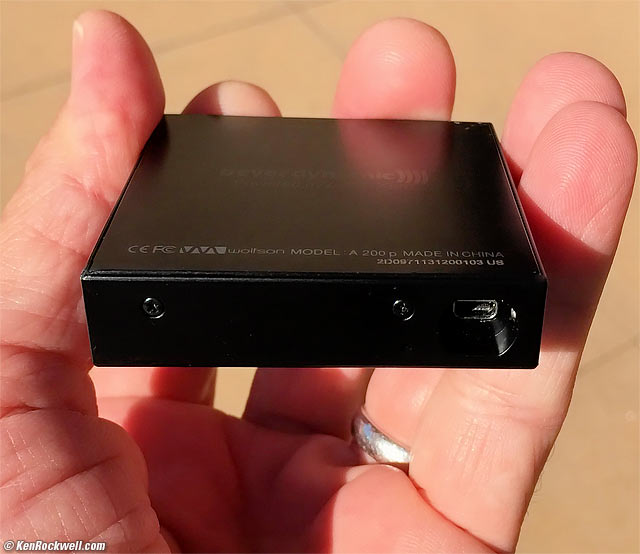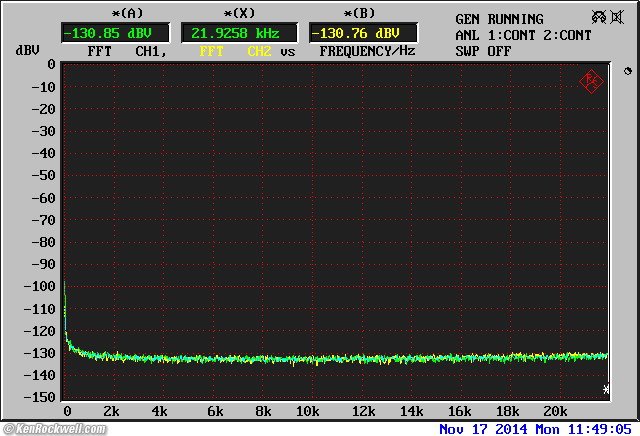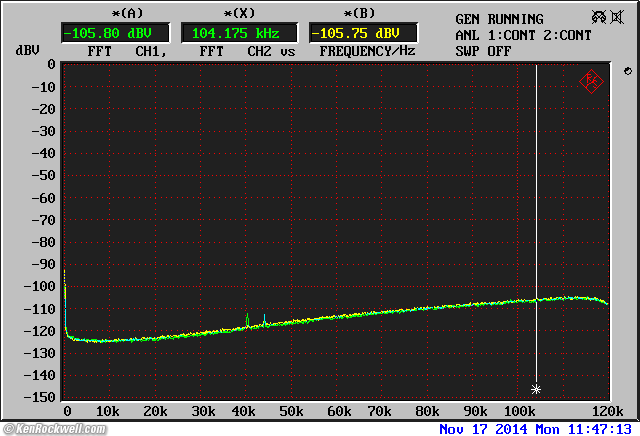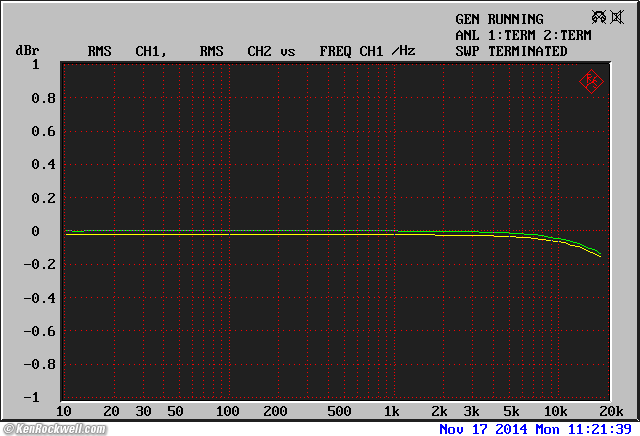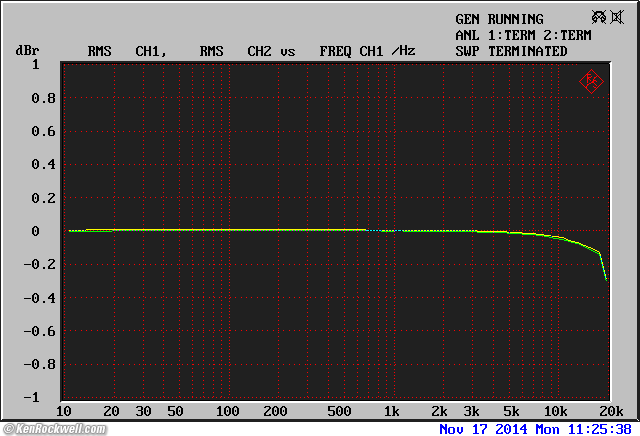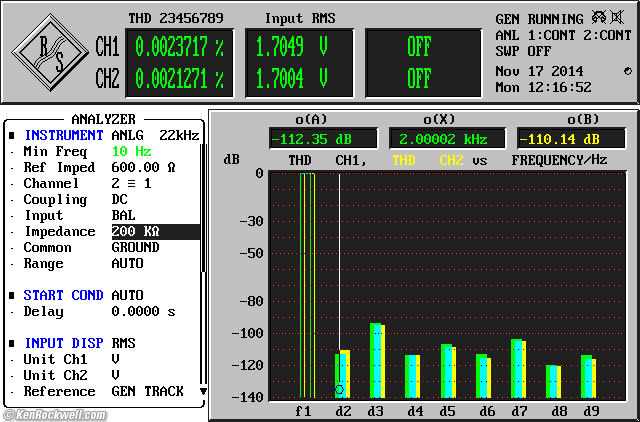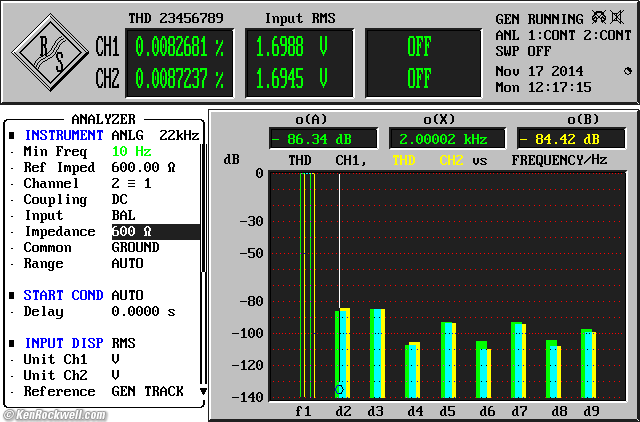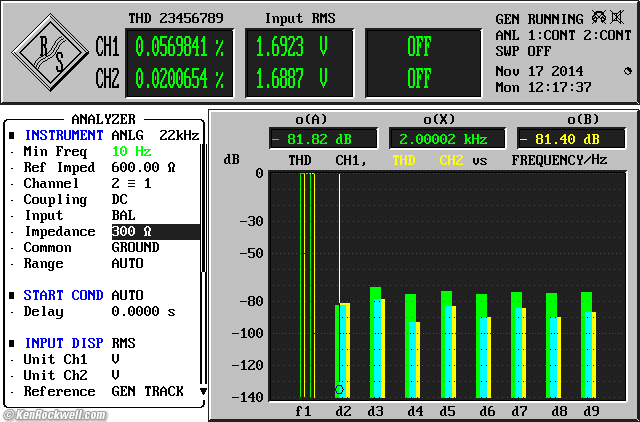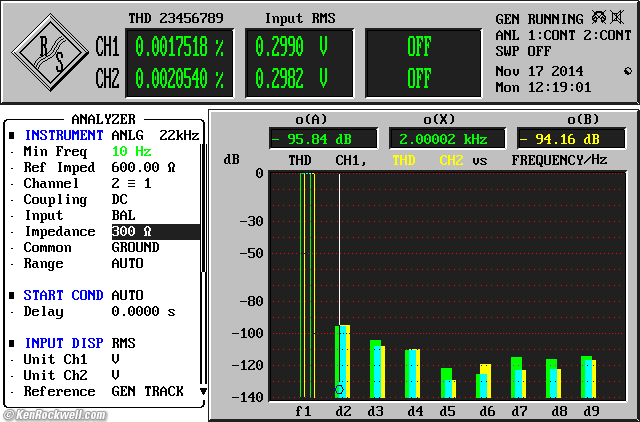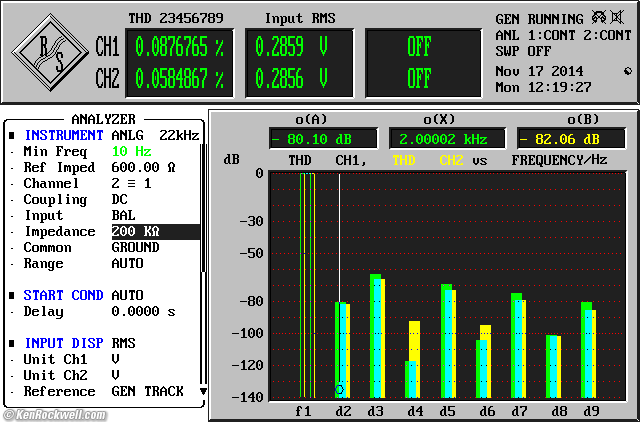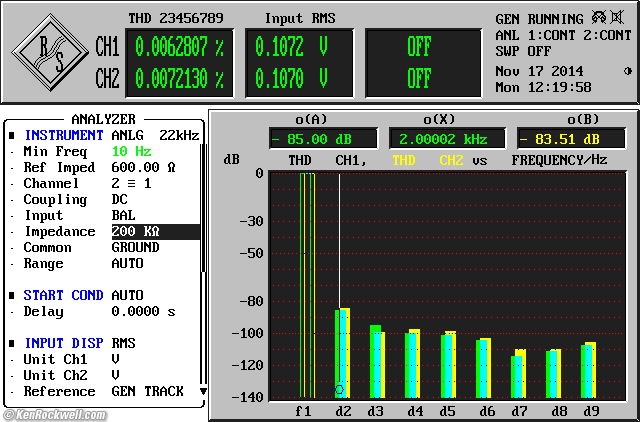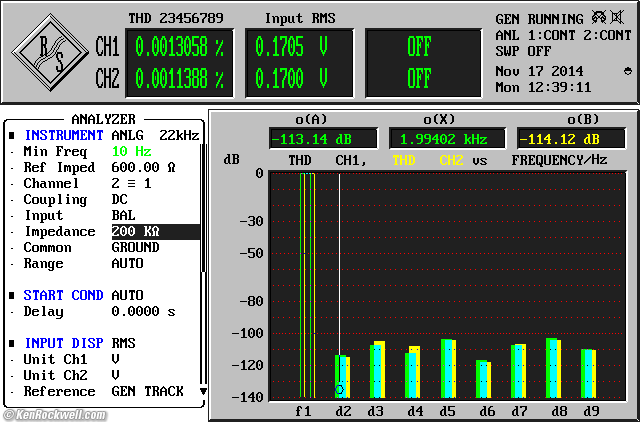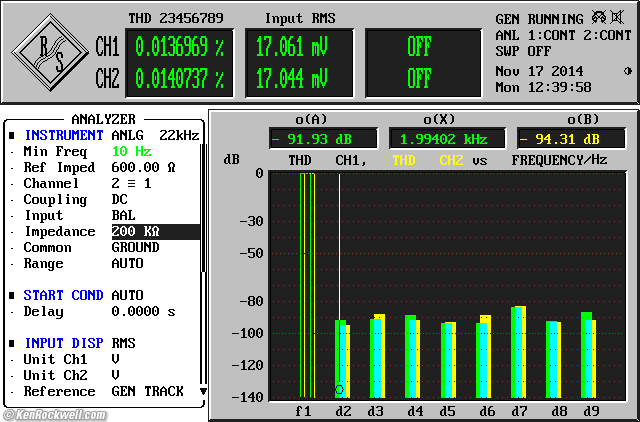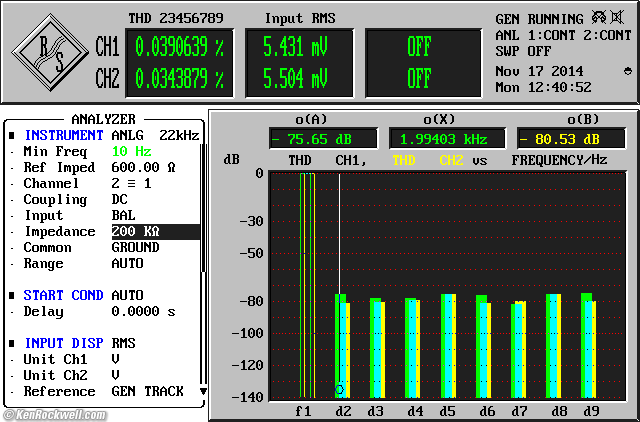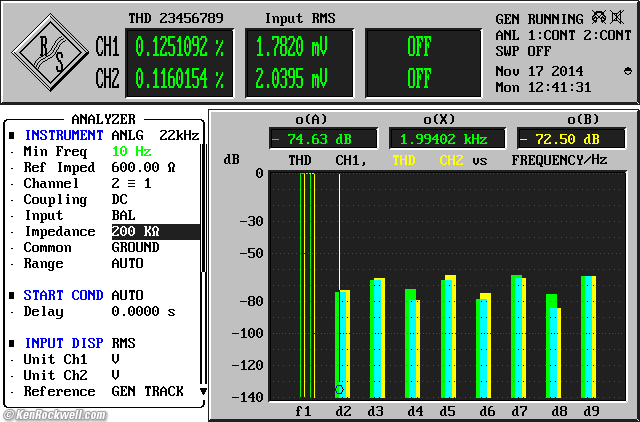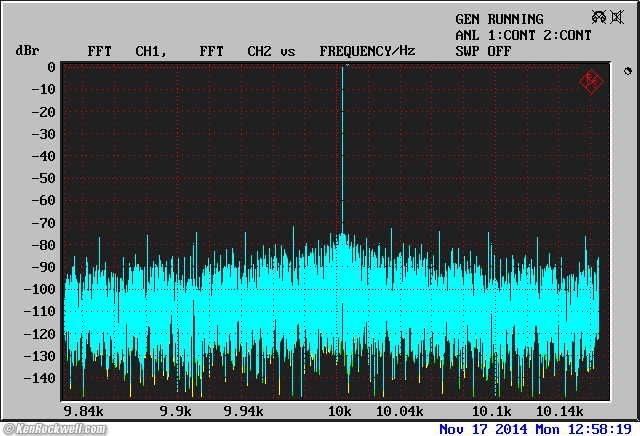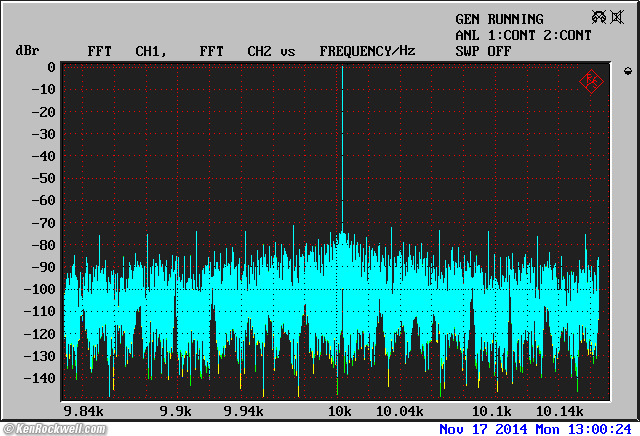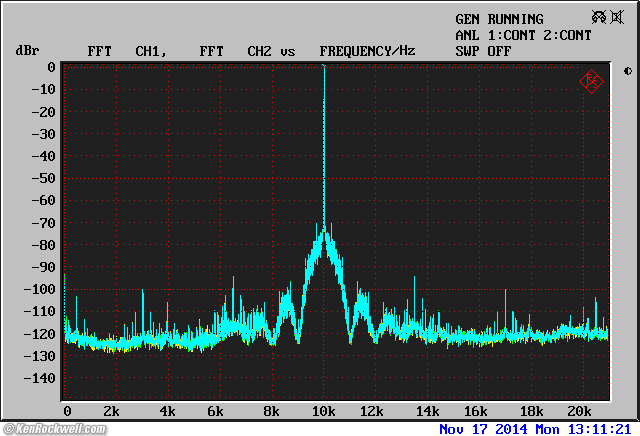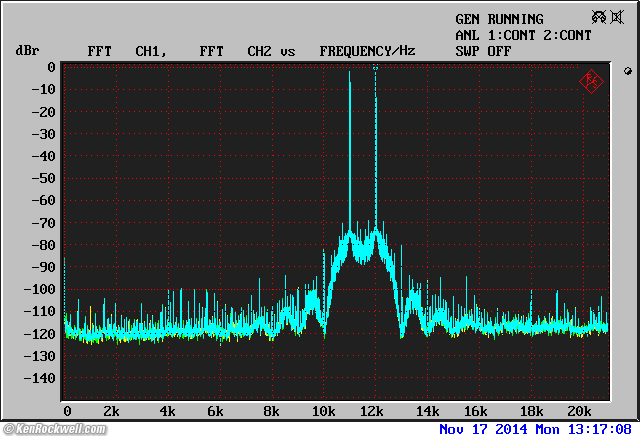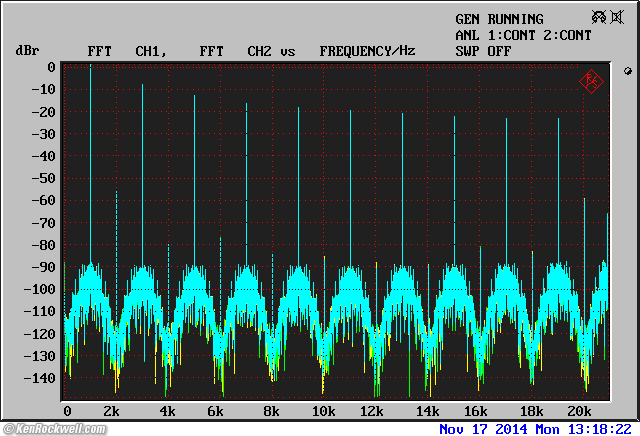Home Donate New Search Gallery Reviews How-To Books Links Workshops About Contact
Beyerdynamic A200p
Portable 24/96 DAC & Amplifier (2014-)
© 2014 KenRockwell.com. All rights reserved.
Intro Specifications Performance Measurements
Compared Usage Recommendations More
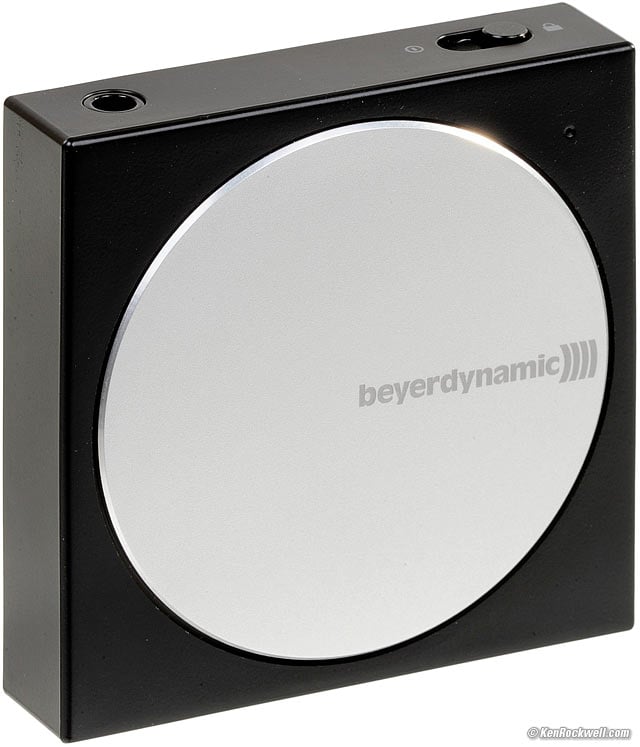
Beyerdynamic A 200p (USB or internal battery power, 1.7V max output, 1.25 Ω output source impedance, 1.8 oz./51g, about $300).This free website's biggest source of support is when you use these links, especially this link to it at Adorama or at Amazon, when you get anything, regardless of the country in which you live. Thanks! Ken.
November 2014 Beyer Reviews Headphone Reviews Audio Reviews All Reviews
Introduction top
Intro Specifications Performance Measurements
Compared Usage Recommendations More
|
Adorama pays top dollar for your used gear. I use these stores. I can't vouch for ads below. |
The Beyerdynamic A200p is a tiny 24-bit, 96 ksps DAC and headphone amplifier. It's the size of a large postage stamp. The big silver circle is the volume control; spin it with your finger.
It's powered by its own internal 11-hour battery or USB. The battery charges via USB. If you use it at your work computer during the day, it will be charged for you to use on the commute home, use all evening and then for the commute back; all at your boss' expense to recharge the next day!
It uses either an iOS device, computer USB or Android as its digital input.
It comes with an Apple Lighting cable for use with modern iOS devices, a micro USB cable for Androids, and a USB cable for charging and playback from a computer.
It works both as a portable DAC and amp, as well as on your desk as a DAC and/or headphone amplifier. Better, Velcro it under your desk for a neat, hidden remote headphone jack or speaker volume control. To control speakers, plug its output into powered speakers or your power amplifier.
While mostly for portable use, I find it very helpful in my office because my desktop 2014 Mac Pro sits up at the back of my desk, with its headphone jack facing away from me. Even if I wanted to reach around to plug in my Beyerdynamic T51i or other portable headphones, the cord won't reach. I put this tiny amp on my desk, and the problem is solved.
It has 4.6 dB (about 1 or 2 clicks) more output than an iOS device when used as an input to an amplifier or preamplifier, or with high impedance (300 Ω and above) headphones. The A200p has less clean maximum output than an iPhone 6 Plus when used with 32 Ω headphones.
Specifications top
Intro Specifications Performance Measurements
Compared Usage Recommendations More
Output
1.7 V RMS.
Output Source Impedance
1.1 Ω.
Recommended Headphone Impedance
600 Ω or less.
Frequency Response
20 - 20,000 Hz ± 0.2 dB.
Signal to Noise Ratio
> 110 dB.
THD
< 0.008%
Crosstalk
> 106 dB.
Connectors
Special micro USB.
3.5mm stereo headphone jack.
Power
USB power input.
Weight
1.805 oz. (51.3g) actual measured, without cords.
Rated 51g.
Included
A 200p.
Black leather belt case.
Apple Lighting cord, 10 cm (4") long.
Android Micro USB cord, 10 cm (4") long.
USB charge and input cable, a meter (3 feet) long.
Manuals.
Order Numbers
A 200p, USA model: 716.715.
(Avoid the 716.707 European model, it has its volume limited to a very low level.)
USB cable: 914.665.
Micro USB cable: 918.830.
Apple Lightning Cable: 918.849.
Leather Belt Case: 914.673.
Quality
Made in China.
Marked Astell & Kern.
Price, USA
$300, October - November 2014.
Performance top
Intro Specifications Performance Measurements
Compared Usage Recommendations More
Volume Control
The volume control is almost the entire top surface. Spin the silver dial.
The volume control goes in 1/2 dB steps, and there are 24 weakly detented steps per revolution, or only 12 dB per turn of the dial. Normal volume controls give about 60 to 90 dB per turn. Therefore it takes quite a few turns of the dial to turn this all the way up or down.
There is no mute button or control; you have to turn the dial numerous times or hit the stop button.
The knob is an encoder to a computer-controlled attenuator. It misses some of the counts if you turn the dial too quickly, so you have to be careful to turn it at just the right speed to get maximum up or down volume control speed.
When turned, you'll see your iOS or Mac volume control slider move up or down.
Although it's slow, it's good. You can control the level over a very large range with great precision, and the channels track perfectly.
Remote Controls
The A200p ignores in-line remote controls on headphones like the T51i.
You have to use the buttons on the amp's side instead:
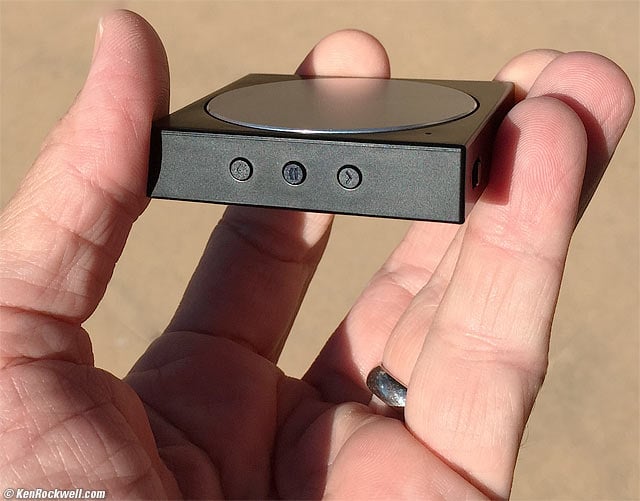
Play controls, Beyerdynamic A 200p.
These little buttons control play/pause, forward and back.
These buttons control iPhone, iPod and iPad, as well as iTunes on my Mac Pro.
On iTunes in Mac, there is no fast forward; instead it keeps moving forward or back multiple tracks as you hold the < or > button.
Sensitivity
The A 200p has 4.6 dB more level than an iOS device. That's only about one or two clicks of an iOS volume control.
Sound
It's neutral; you hear what you've got.
With its low output source impedance, low noise and flat response, it sounds the same as the output of an iOS device.
It can play very slightly louder than an iPhone 6 Plus with high-impedance headphones, but has much more distortion when trying to play low impedance headphones very loud. For low-impedance headphones, the direct output of the iPhone 6 Plus is better.
Mechanics
Bottom, Beyerdynamic A 200p. bigger.
This isn't the usual professional Beyerdynamic MADE-IN-GERMANY quality
The A200p is a consumer accessory made in China mostly out of plastic.
Measurements top
Intro Specifications Performance Measurements
Compared Usage Recommendations More
Maximum Output Levels Output Source Impedance
Gain Control Channel Balance Channel Tracking
Noise DC Offset Frequency Response THD
Output Spectra & Square Waves Low-Level Linearity
These measurements are made with an exotic Rohde & Schwarz UPL laboratory analyzer. The traces from the Rohde & Schwarz UPL laboratory analyzer are color coded for the Left Channel and for the Right Channel. When they don't lie on top of each other, it's due to channel imbalance. When they do lie on top of each other, the trace turns blue.
Unless otherwise specified, all measurements are RMS at 1 kHz into 200 kΩ.
Maximum Output Levels measurements top
Load |
Maximum Output |
Gain |
200 kΩ |
1.702 V (4.62 dBV) @ 0.001% THD |
Maximum |
600 Ω |
1.695 V (4.58 dBV) @ 0.008% THD |
Maximum |
300 Ω |
1.690 V (4.56 dBV) @ 0.03 % THD |
Maximum |
37.5 Ω |
0.30 V (-10.46 dBV) @ 0.1% THD |
-15 dB |
37.5 Ω |
1.020 V (0.17 dBV) @ 0.33 % THD |
- |
37.5 Ω |
1.141 V (1.15 dBV) @ 0.45 % THD |
- |
37.5 Ω |
1.194 V (1.54 dBV) @ 2.9 % THD |
- |
It has difficulties driving low impedance loads, as you'll see with the high levels of distortion.
Worse, it's not nice even-order distortion as we'd get from vacuum tubes; it's nasty odd-order clipping distortion:
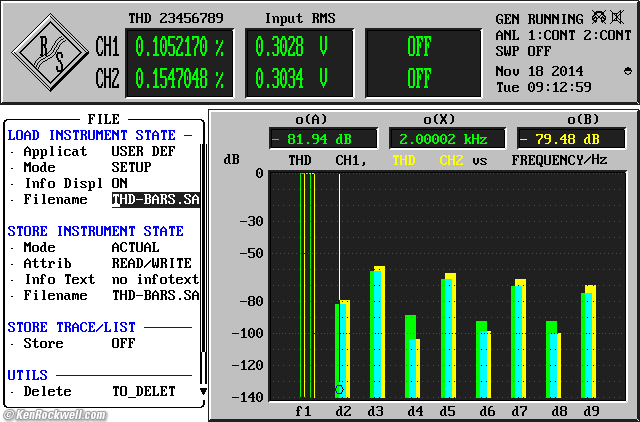
Harmonic content, undithered 1kHz sine wave at 0 dBFS at 303 mV into 37.5 Ω. (CBS CD-1 track 1, R&S UPL.)
0.1% is the verge of audibility for clipped sine waves, which is why I use 0.1% as my criteria for rating amplifier output levels. I can hear any more than that, although you can get away with a few percent on actual music.
Therefore this amp is only good for 300mV of output into 37.5 Ω. It will be even less into 32 Ω.
Output Source Impedance measurements top
1.25 Ω.
Gain Control measurements top
0.5 dB/click.
24 clicks per revolution = 12 dB per revolution.
What should be -10 dB is really -10.03 dB.
What should be -20 dB is really -20.057 dB.
What should be -30 dB is really -30.10 dB.
What should be -40 dB is really -40.14 dB.
What should be -50 dB is really -50.17 dB.
What should be -60 dB is really -60.21dB.
Minimum gain before mute: -67.22 dB.
Maximum attenuation ("mute') is -135 dB or more.
Channel Balance measurements top
The right channel is about 0.0222 dB lower than the left, at maximum gain.
Channel Tracking measurements top
The channels track to within a hundredth of a dB or so as the volume is changed, as expected for an electronic attenuator.
The stereo image doesn't vary as the volume is changed; this is excellent performance.
Noise measurements top
Playing digital zeros, 22 kHz bandwidth:
Level |
SNR* |
ENOB** |
|
A-weighted |
-105.5 dBV |
110.1 dB |
18.0 bits |
Unweighted |
-102.3 dBV |
106.9 dB |
17.5 bits |
* referred to maximum output.
** Effective Number of Bits : (SNR - 1.72 dB) / 6.0206.
FFT while playing zeros. (CBS CD-1 track 4, R&S UPL.)
Wideband FFT while playing zeros. (CBS CD-1 track 4, R&S UPL.)
DC Offset measurements top
-0.44 mV left, +1.11 mV right.
Frequency Response measurements top
Analog output at 0 dBFS, 600 Ω load. (CBS CD-1 track 11, R&S UPL.)
Analog output at 0 dBFS, 37.5 Ω load. (CBS CD-1 track 11, R&S UPL.)
+0, -0.2 dB, which is swell.
Yes, it rolls off a tiny bit at the top, and that might make it sound slightly smoother and warmer.
THD measurements top
Harmonic content, undithered 1kHz sine wave at 0 dBFS at maximum level into 200 kΩ. (CBS CD-1 track 1, R&S UPL.)
Harmonic content, undithered 1kHz sine wave at 0 dBFS at maximum level into 600 Ω. (CBS CD-1 track 1, R&S UPL.)
Harmonic content, undithered 1kHz sine wave at 0 dBFS at maximum level into 300 Ω. (CBS CD-1 track 1, R&S UPL.)
Harmonic content, undithered 1kHz sine wave at 0 dBFS at 300 mV into 300 Ω. (CBS CD-1 track 1, R&S UPL.)
Harmonic content, undithered 1kHz sine wave at 0 dBFS at 286 mV into 37.5 Ω. (CBS CD-1 track 1, R&S UPL.)
Harmonic content, undithered 1kHz sine wave at 0 dBFS at 107 mV into 37.5 Ω. (CBS CD-1 track 1, R&S UPL.)
Let's play tracks at lower levels into 200 kΩ and see what happens:
Analog output harmonic content, undithered 997 Hz sine wave at -20 dBFS. (CBS CD-1 track 18, R&S UPL.)
Perfect, it's got even less distortion at -20 dBFS where it counts.
Let's keep dropping the recorded level:
Analog output harmonic content, undithered 1kHz sine wave at -40 dBFS. (CBS CD-1 track 18, R&S UPL.)
Analog output harmonic content, undithered 1kHz sine wave at -50 dBFS. (CBS CD-1 track 18, R&S UPL.)
Analog output harmonic content, undithered 1kHz sine wave at -60 dBFS. (CBS CD-1 track 18, R&S UPL.)
Marvelous; distortion doesn't even become slightly audible until -60 dBFS recorded level; and for all I know, that might be noise filling those bins and not distortion.
This is great for driving a preamplifier, but sadly the distortion when driving lower impedances is almost as high at 0 dBFS as it is at -50 dBFS driving a light load.
Output Spectra measurements top
10kHz 11+12kHz IMD Square Wave
Let's see a zoomed FFT of a 10 kHz sine wave. Let's see what sort of spurs surround the carrier, which show us internal jitter:
Zoomed spectrum of 10,007 Hz 0 dBFS sine wave at 1.7 V into 200 kΩ. (CBS CD-1 track 9, R&S UPL.)
This is pretty bad. Even a cheap CD player or DAC is better than this, and an iPhone 6 Plus is much better.
Just for fun, let's see if anything changes if we lower the playback level:
Zoomed spectrum of 10,007 Hz 0 dBFS sine wave at 1.0 V into 200 kΩ. (CBS CD-1 track 9, R&S UPL.)
Nope, still crummy.
Spectrum of 10,007 Hz 0 dBFS sine wave at 1.7 V into 200 kΩ. (CBS CD-1 track 9, R&S UPL.)
Whoa! This looks almost as if it's masked noise after something was data compressed. The good news is even though it looks much worse than other DACs or the direct analog output of an iPhone 6 Plus, the spuriae far away from the carrier (where we might actually hear something wrong) are very low. Therefore this won't affect the sound even though it's much worse than other DACs.
Let's see how 11+12 kHz IMD look:
IMD spectrum at 11 kHz and 12 kHz 1:1. (CBS CD-1 track 13, index 2, R&S UPL.)
This is poor, but since the crud level down at 1 kHz where it counts is low, I'm not going to worry about it.
Let's look at square waves:
Spectrum of 1,002.27 Hz 0 dBFS square wave. (CBS CD-1 track 16, R&S UPL.)
This isn't perfect but it is very good. This shows us that it won't distort or do anything crazy when playing modern CDs that are recorded at 110%.
Low-Level Linearity measurements top
The 500Hz dithered fade-to-noise test (track 20 on the CBS CD-1 test CD) sounds great out to at least 25.5 seconds, or -111 dBFS, when played from an iOS device. Not bad for a 16-bit system!
Compared top
Intro Specifications Performance Measurements
Compared Usage Recommendations More
My iPhone 6 Plus has much less distortion into low impedance loads. I suspect this is because Apple obviously has far more audio design resources than any third-party maker in general, and the iPhone 6 Plus has a much larger battery and probably much better power supplies than this tiny little DAC and amp does. The A200p poops out and just can't deliver enough clean current to drive low-impedance headphones as well as the iPhone 6 Plus can.
The iPhone 6 Plus also has flatter frequency response and much cleaner output spectra with any load than the A200p.
While the A200p has 4.6 dB more output into high impedance headphones, the iPhone 6 Plus has much cleaner output into low impedance headphones.
The iPhone 6 Plus is much better than earlier iPhones, and its internal DAC and amplifier are better overall than the A200p. The iPhone even has the same half-dB volume steps and covers a wider range, if you use the iPhone's volume slider instead of the buttons on the side.
I haven't measured any generic MP3/Samsung/Android etc. players. I doubt they are as good as the Apples, which are all superb. Most other brands of digital audio gear that I have tested, like TASCAM and ZOOM, aren't as good as the Apple simply because while they all use mostly the same chips inside, Apple has far more resources to ensure that the analog circuits and every other subtle thing that matters is done right.
Usage top
Intro Specifications Performance Measurements
Compared Usage Recommendations More
It's easy.
Plug it into USB to charge. The green LED blinks slowly, and stops when full.
There's no software or apps needed with Apple; just plug and play.
On Mac, be sure to go to Settings > Sound and assign your sound output to this DAC.
On iOS, just plug it in and audio comes out the A200p. Unplug, and the audio returns to come from your iOS device. Simple.
An LED blinks red as you turn up the volume, and blue as you turn it down. It glows steady red when you've hit the lowest level, and steady blue at the maximum level.
Recommendations top
Intro Specifications Performance Measurements
Compared Usage Recommendations More
The A200p is swell stamp-sized DAC and amp for desktop and portable use. Velcro it under your desk during the day, and pull it off and stick it in your backpack on the way home. Its big volume control is handy on a desk, and it makes a very handy local headphone jack when used with a desktop computer.
Forget the European EU version; its maximum volume severely limited. If you get one, it can be reprogrammed to give the full levels reported here for the USA version I used.
This A200p is swell for use with high impedance (300 Ω and above) headphones, and has a little more output than an iOS device.
For low impedance (75 Ω and less) headphones, the native analog headphone output of the iPhone 6 Plus is better than the output of the A200p. The A200p isn't as happy driving low impedances as is the iPhone 6 Plus. Ditto for driving a Hi-fi system; the analog output of the iPhone 6 Plus is actually far better than earlier iPhones and is so good that it's better than this DAC.
The A200p doesn't do much for Apple devices because their analog outputs are so good already, but the A200p is a very good little DAC and may improve on the outputs of other brands of mobile doo-dads and and computers. Off-brand MP3 players like Samsung and Android may or may not be awful, and may be greatly improved by the A200p.
If you find my efforts here helpful, this free website's biggest source of support is when you use these links, especially this link to it at Adorama or at Amazon when you get anything, regardless of the country in which you live.
Thanks!
Ken.
More top
Intro Specifications Performance Measurements
Compared Usage Recommendations More
Help me help you top
I support my growing family through this website, as crazy as it might seem.
If you've found my research helpful, this free website's biggest source of support is when you use these links to approved sources when you get anything, regardless of the country in which you live. Thanks! Ken.
If you find this page as helpful as a book you might have had to buy or a workshop you may have had to take, feel free to help me continue helping everyone.
If you've gotten your gear through one of my links or helped otherwise, you're family. It's great people like you who allow me to keep adding to this site full-time. Thanks!
If you haven't helped yet, please do, and consider helping me with a gift of $5.00.
As this page is copyrighted and formally registered, it is unlawful to make copies, especially in the form of printouts for personal use. If you wish to make a printout for personal use, you are granted one-time permission only if you PayPal me $5.00 per printout or part thereof. Thank you!
Thanks for reading!
Mr. & Mrs. Ken Rockwell, Ryan and Katie.
Home Donate New Search Gallery Reviews How-To Books Links Workshops About Contact



